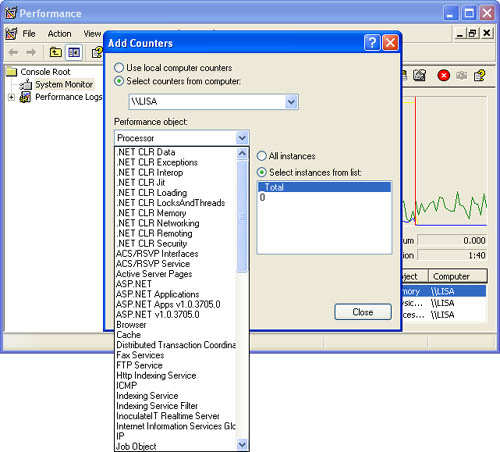Appendix C. Common Language Runtime Performance Counters
| I l @ ve RuBoard |
| If it weren't for performance counters, troubleshooting applications would be a whole lot more difficult. Not to say that performance counters always make it easy, but they can give you a solid indicator of the health of your application. This appendix is a reference to the common set of Microsoft .NET performance counters. All of the information here is available in the documentation that ships with Microsoft Visual Basic .NET, but not all of it is easy to find or convenient to access. Figure C-1 shows the counters we're interested in. Of the counters that appear in the figure, those listed after the figure are the managed or ASP.NET counters of interest. Note You'll notice some duplication under the ASP.NET counters in Figure C-1 (the v1.0.3705.0 counters). Those are exact duplicates of the other two ASP.NET counters, with the exception that they are build-specific. This will enable you in the future to profile different versions of ASP.NET running on the same machine. For the time being, you can ignore them; the two groups listed here are functionally equivalent for now. Figure C-1. A view of the .NET and ASP.NET performance counters. |
| I l @ ve RuBoard |
EAN: 2147483647
Pages: 103
